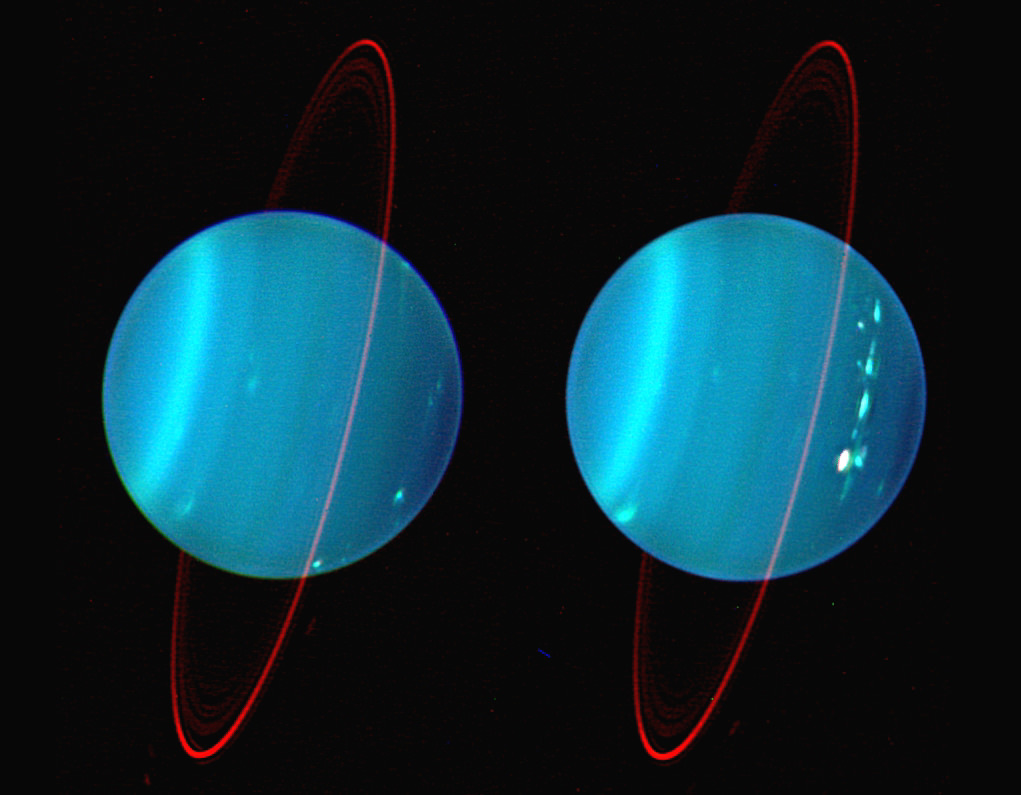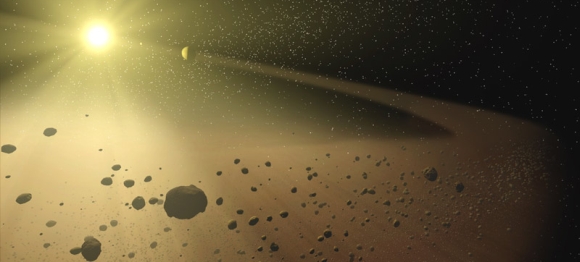

Uranus viewed in the infrared spectrum, revealing internal heating and its ring system. Image Credit: Lawrence Sromovsky, (Univ. Wisconsin-Madison), Keck Observatory
As Uranus speeds in its orbit in the solar system, there are three large space rocks that are in lockstep with the gas giant, according to new simulations. Two of them are wobbling in unstable “horseshoe” orbits near Uranus, while the third is in a more reliable Trojan orbit that is always 60 degrees in front of the planet.
The largest of this small group is the asteroid Crantor, which is 44 miles (70 kilometers) wide. Its horseshoe orbit, and that of companion 2010 EU65, means the space rocks seesaw between being close to Uranus and further away. They should stay in that configuration for a few million years.
The last of the group is 2011 QF99, in a Trojan orbit near one of Uranus’ Lagrangian points — sort of like a celestial parking spot where an object can hang out without undue influence from the balanced gravitational forces.


The results illustrate the importance of space rocks that are outside of the main asteroid belt between Mars and Jupiter.
There are several kinds of these asteroids (classified by their orbits) that follow around planets in the solar system. Earth itself, for example, has at least one Trojan asteroid.
“Crantor currently moves inside Uranus’ co-orbital region on a complex horseshoe orbit. The motion of this object
is primarily driven by the influence of the Sun and Uranus, although Saturn plays a significant role in destabilizing its orbit,” the authors wrote in their new study.
“Although this object follows a temporary horseshoe orbit, more stable trajectories are possible and we present 2010 EU65 as a long-term horseshoe librator candidate in urgent need of follow-up observations.”
The results are described in Crantor, a short-lived horseshoe companion to Uranus (Astronomy & Astrophysics, March 3, 2013.)
Could a new, fifth force of nature provide some answers to our biggest questions about…
In 2015, the United Nations adopted the 2030 Agenda for Sustainable Development—the Sustainable Development Goals…
Astronomers have been battling threats to their clear skies on all fronts lately. One of…
If you were Captain of the first USS Enterprise, where would you go!? Humanity is…
Now is the best time to observe Mars in 2025. Mars from 2014. Credit: Paul…
Scheduled for launch in 2027, the Nancy Grace Roman Telescope is slowly being readied for…